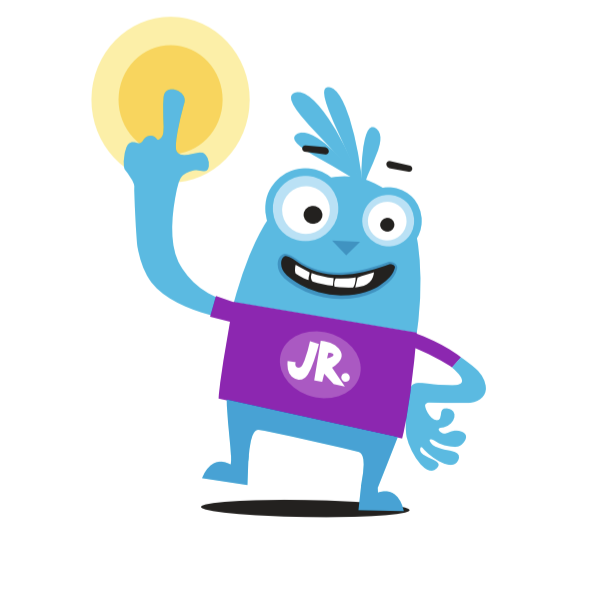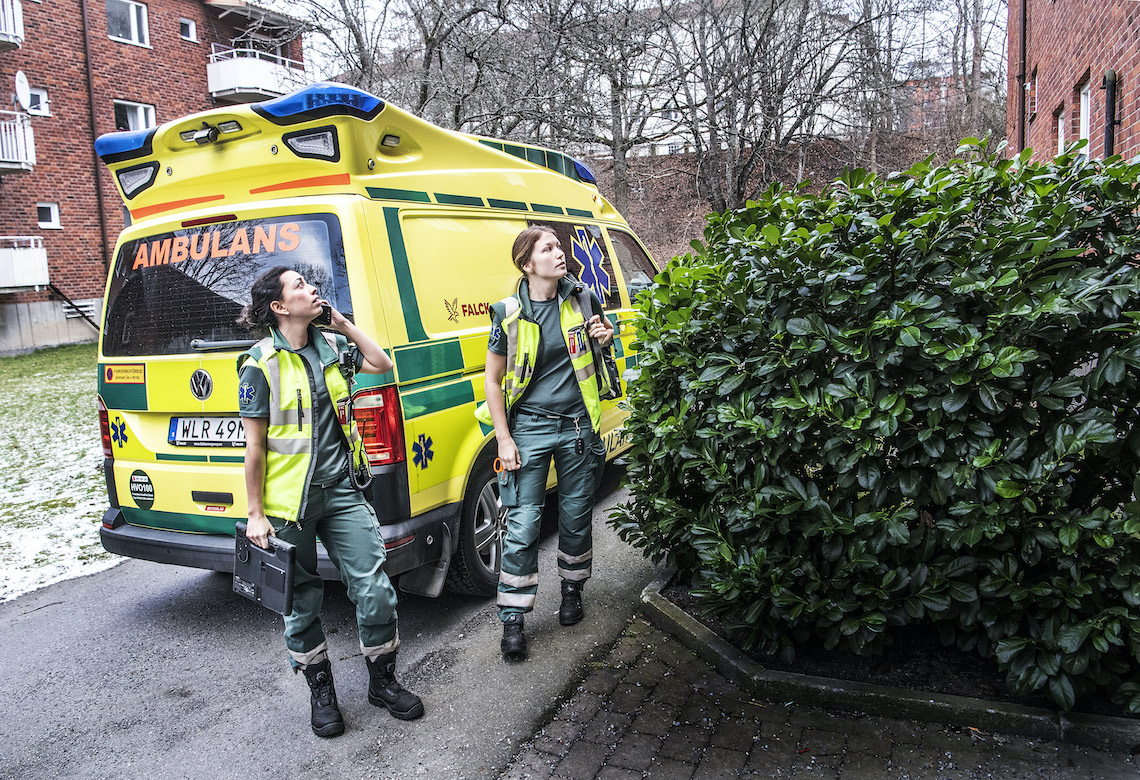It’s not about the ads any more

It’s not about the ads any more
20 years ago Schibsted challenged its own business by creating an online marketplace for classified ads. Now it’s time to take the next step. Next generation marketplaces will meet the users’ true needs.
Maria and Niclas are moving in together and have decided to rent out Niclas’ apartment on Södermalm in Stockholm. Listing it on Blocket is easy. But then it gets harder. Of all the people contacting them, who will be a good tenant? As first-time landlords, they choose Christer, a likable young man from Linköping. How could they possibly know that he would stop paying rent after four months?
Our online marketplaces are now more than 20 years old. During that time they have become an integral part of society. With more than 264 million visits per month, and unaided brand awareness in the range of 75 to 95 percent you’ll be hard-pressed to find someone who doesn’t know about Finn, Blocket, Tori or Oikotie. Sleek, modern apps have made it possible to post an ad in just seconds, while advanced search and recommendation algorithms have made it easier than ever to find what you’re after. Even so, Maria and Niclas found it stressful and burdensome to rent out their apartment. Why?

The reality is that even with all the advancements we’ve made over the last 20 years, we still owe our heritage to the old newspaper classifieds. They were essentially poster boards which left it up to the buyer and seller to figure out what to do after the initial contact. This is, unfortunately, still somewhat true today. It turns out that while making it easy to post and find ads is important, there are also plenty of other pain points buyers and sellers encounter, as the example with Maria and Niclas shows. In fact, if we zoom out a little, we begin to recognize that the goals of our users have nothing to do with ads at all. In fact, they are not interested in ads. What they really want is to rent out their apartment, drive a car, hire a dream candidate for a job or buy that one-of-a-kind set of vintage sneakers. Achieving these goals means overcoming a series of pain points in a longer transaction journey.
Different pain points
Next generation marketplaces will meet these needs and solve these pain points for consumers and professionals. While ads for different categories are fairly similar, the processes and pain points can be wildly different. For example, a landlord is interested in choosing the right tenant, having a solid contract in place and being certain that rent is paid every month. A car buyer will be concerned about the condition of the car, how to get a car loan, and how the payment is matched with the new ownership registration, among other things. Finally, a buyer of vintage clothing may be interested in shipment from a different part of the country. Each marketplace category has its own set of unique challenges to be solved in order to be called ”next generation”.
First and foremost, solving these pain points will make these services easier and safer. One example is Qasa, a fully digital real estate rental platform, which Schibsted is rolling out across the Nordics. Qasa has specialized in making the rental experience as convenient as possible. For the tenant it provides better search tools, such as making it possible to search within a specific commute time from where you work. The service revolves around a tenant profile which makes it easier for tenants to show who they are and for landlords to evaluate them. Finally, the service provides an added layer of security to the landlord by providing a digital contract, home insurance and payment guarantee.
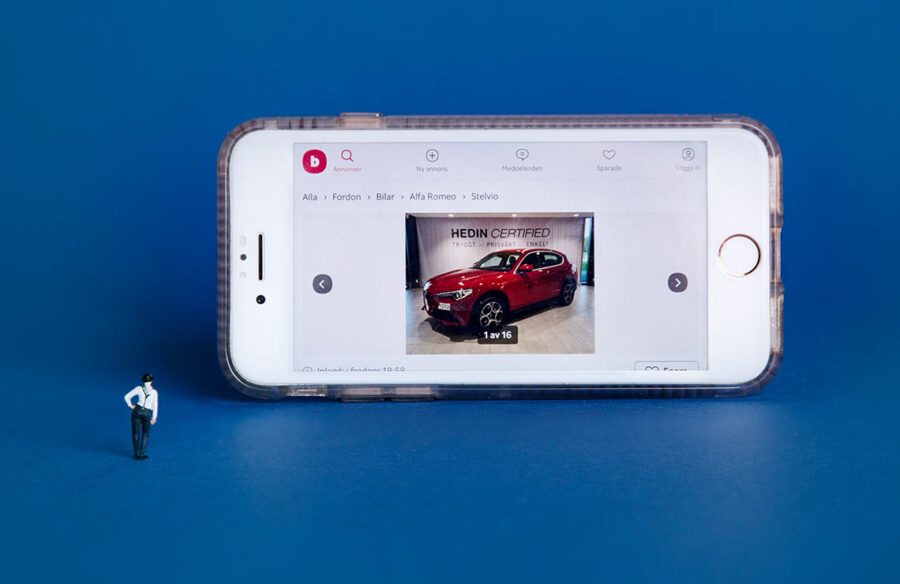
Another example is within cars. Both Finn and Blocket have started the work to make the car sales process fully digital. This includes a digital contract, integrated payment and payout of car loans along with automatic ownership registration. There are also extra services, such as free insurance for 30 days to the new car owner. All these features are significant upgrades to our core service in order to meet the users’ needs.
Marketplaces will keep evolving
This digital process makes it much easier to sell your car yourself. Still, we know that some want it to be even easier and they are willing to pay for it. One indication of this is that more than half of all car sellers choose to trade in their car to a dealer, knowingly leaving tens of thousands of kroner on the table. This is where Nettbil can help out. With this service you just enter your license plate number and you get an immediate price indication. If you’re satisfied, you deliver the car to a certified test center. From here on everything is taken care of. The car is tested, pictures taken, and the car is put up for auction to thousands of car dealers across the country, ensuring that you get the best possible price for your car. You can literally sell your car in a day.
Some people will of course continue to just post an ad and do everything themselves, while others want a better and simpler service, and are willing to pay for it. Upgrading only a small percentage of our users to next generation marketplace models could have significant business potential – but not least it would also increase loyalty and meet the users’ core needs.
Looking into the future, marketplaces will continue to evolve rapidly in line with market demands. This evolution will make private-to-private transactions more similar to retail e-commerce experiences. For our couple, Maria and Niclas, life will be easier as they can rent out their apartment without worries, knowing that the service provided will ensure they get paid on time every month.

Christian Printzell Halvorsen
EVP Nordic Marketplaces/CEO of Finn
Years in Schibsted
11
What I’ve missed the most during the Corona crisis
The daily dose of fun and energy from physical interaction with colleagues
Fintech will keep changing banking

Fintech will keep changing banking
The financial services industry has been completely disrupted the last few years. What made this possible and what implications does it have on people’s personal wealth and society at-large?
The fintech landscape has changed dramatically over the course of the previous decade. Born out of the global financial crisis of the late aughts, a general distrust of traditional banks paved the way for a new wave of competitors, who utilized their technical superiority to reshape the financial services sector. Suddenly, your bank didn’t require a physical location, just an app. This caught the old guard by surprise, as they not only lacked the technological know-how to respond but were also limited by archaic legacy systems. Challenger banks arrived on the scene promising a user experience on par with the world’s leading tech companies – frictionless, modern, and on-demand.
Today the smartphone is at the forefront of banking, capable of making payments, receiving funds, and managing our financial portfolios. The words ”mobile-first” are not an aspiration but rather necessary for survival. Fintech has brought a new global standard of banking, from lifting emerging markets and helping to accelerate the adoption of e-commerce, to simplifying money transfers and expediting the end of physical currency. But where do we go from here? What does the future have in store for the next generation of fintech actors?

It’s difficult to assess how fintechs will evolve without knowing the full extent of Covid-19’s impact on the global economy. But let’s look at what the trends portend.
Going forward, expect big data to play a more prominent role in conjunction with developing AI technology. Risk assessment will take on a new shape as digital banks look to open up access to credit for new pools of customers. Whereas traditional banks relied largely on precedence when weighing credit risk, digital banks will have access to a much more nuanced, holistic, and accurate snapshot of an applicant’s creditworthiness.
AI will make banks more effecient
Real-time analysis of customer data (both financial and personal) will allow banks to cross- and up-sell products and solutions designed with the individual in mind. Advances in risk assessment will allow banks to reach the underbanked and consumer groups without a credit history. That’s why it’s important to pay close attention to artificial intelligence and its continued integration into financial technology. AI has the potential to make banks more efficient, allowing for cost-reducing automation while eliminating errors.
Look no further than insurtech companies, which have embraced AI and advanced analytics to help make more accurate risk assessments on random events like catastrophes, based on historical data.
At the consumer level, automation has the potential to oversee our financial portfolio and help guide us through complex decisions such as investments, retirement planning, and home loans, while also carrying out routine tasks such as bill payments.
According to Deloitte’s Bank of 2030 report, the ideal automated tool would operate behind the scenes, monitoring the market for deals and products without human intervention. Whether banks can deploy AI technologies at scale, however, remains to be seen.
Corona pushing new solutions
The pandemic in particular has been a boon for payment providers. Let’s start here in Sweden, where Klarna has skillfully navigated the crisis to become Europe’s most valuable fintech ($10.65bn). When the Coronavirus forced us out of stores and towards e-commerce, Klarna was there, with a well-designed product, simple USP, and custom payment options that quickly caught on with Millennials and Gen Z. Retailers rejoiced. After all, the easier a payment provider can take the customer from shopping cart to checkout, the higher the conversion rate for retailers.
But Klarna’s ambitions don’t end with payments. As Germany’s Handelsblatt notes, Klarna has grown to where it’s not just competing against other payment service providers such as Paypal, but has set its sights on banks themselves.
A host of other payment providers have thrived in a marketplace still marked by fragmentation. Dutch startup Mollie secured unicorn status (privately held with a valuation of more than $1bn) thanks to its application programming interface (API) that conceals the complexity for merchants of accepting localized payment options. One of Mollie’s lead investors in its most recent funding round referred to the company as aiming to be the ”Apple of the payments world.”
Globally, we’re at crossroads with regards to fintech. As McKinsey points out, many European fintechs are still not profitable and thus reliant on a scarce resource – investor funds. Yet fintechs have several inherent advantages – such as agility – and the changes they’ve brought about to the financial world are here to stay. Customers want more digital with their banking services, not less.
What we may end up seeing is a consolidation of power in the 2020s, with the largest banks and payment providers expanding their product offerings and portfolios with strategic acquisitions.
Or we could see the continued buildout of fintech ecosystems by global tech titans, in the search to create an all-in-one super banking app. In China, both Tencent and Alibaba have a duopoly on mobile payment platforms (Wechat Pay and Alipay), which when combined, according to CB Insights, serve nearly 94 percent of the Chinese population and act as a launch pad for other financial services, such as interest-free installment lending.
Amazon is creating a suite of services
One of the biggest hurdles for challenger banks is customer acquisition costs, an area where multinational conglomerates will hold a sizable advantage with their flywheel economic systems. This is the route Google and Amazon want to follow as they strategically move towards offering digital banking services. Amazon’s case study is particularly interesting, given the wealth of data it has on customers, from purchase history to entertainment consumption habits. Amazon is reportedly exploring forays into home insurance and medical insurance, to go along with a suite of financial services like banking, business loans, and payments. The question remains whether regulation will serve as a blocker, or merely an obstacle.
Let’s peek into the future. There are indications that the new decade should bring about a level of refinement when compared to the disruption of the previous ten years. Clearer hierarchies will establish themselves as the focus shifts more towards products and services, and less on direct competition with incumbent banks. That means, ideally, consumers should stand to benefit from a broader and more comprehensive world of financial opportunities.
Disruption is out with digital banks
While traditional banks and startup-challengers have begun to cooperate, the next market to be disrupted is insurance. And payment is on its way into a new phase with biometric security solutions. These are three major trends within fintech.
Disruption is out with digital banks
The first wave of challenger banks declared war on their traditional counterparts. But the newcomers on the market see the old guard less as adversaries and more as partners. Why? Because classic banks have leveled the playing field with the help of banking APIs – allowing for P2P payments. They’ve also introduced suites of digital services, and UX-friendly apps – and invested in in-house accelerators (see BBVA) to help develop future fintech partners. And while challenger banks are here for the long haul, especially given their impressive funding rounds in recent years, they still need to diversify their services to sustain revenue models beyond card transactions.
Insurtech
More than a few fintech analysts have identified insurance as the next multi-billion dollar industry ripe for disruption. The consulting firm McKinsey assessed that the combination of tech-savvy players on the market would ”alter the terrain on which incumbents compete.” This is particularly true among younger, forward-thinking consumers, who can compare different offerings (such as homeowner, risk, and even pet insurance) and discover transparent, custom-tailored products packaged via AI. Europe is an especially promising market for insurtech (thanks to a robust insurance culture), helping power Germany’s Wefox to unicorn status and attracting global players like Lemonade.
Payments
In recent years, payments have experienced more volatility and change than any other area of fintech. As the pandemic ushered in a new era of e-commerce, payment companies including Stripe and Klarna have seized the moment with their ability to manage what retailers have struggled with for over a decade: building a frictionless online payment system. This has also helped facilitate the growth of e-commerce in previously untapped markets.
The ”new normal” of the global economy means uncertainty, with unemployment and fluctuating wages, which is why we’re witnessing a rapid adoption of ”buy now, pay later” services, especially among younger consumers who might lack access to credit cards.
The need for more hygienic, contactless means of payment has also increased Western demand for virtual wallets and mobile point-of-sale terminals, the latter of which has big implications for Apple Pay and Alipay. Amazon took this one step further in September with its announcement of palm-recognition for payments. The use of biometric information is especially important to monitor, given how much security it offers.
Indicative of the rise of payments is how quickly the world’s two biggest payment providers (Visa and Mastercard) moved to acquire market space, particularly through strategic M&As and partnerships. However, the global payment infrastructure must address the issue of access, as a cashless economy will have significant impact on society’s unbanked.

Jeremy Cothran
Industry Editor, UpNext
Years in Schibsted
1
What I’ve missed the most during the Corona crisis
Hiking in South Tyrol, Italy
Healthcare will go digiphysical

Healthcare will go digiphysical
The pandemic has sped up technology adoption in healthcare by three to five years. Both patients and providers have drastically changed their habits. But Covid-19 has also highlighted the paradox that digital isn’t enough.
During the era of social distancing, the way we interact with each other, companies and services is changing. As people were encouraged (or forced) to stay home, barriers to adoption of new technology were almost artificially lowered. Online groceries, pharmacies and retail all experienced unprecedented growth, as did the platforms that enable video conferencing. Something happened to patients and providers too.
Overnight, patients stopped visiting the doctor. However, their medical needs did not go away. New habits formed, as many patients flocked to the digital front doors of healthcare for the first time. Some patients needed help directly related to Covid-19, while the majority of consultations were about the same medical issues as before: diabetes management, ear infection or a bad knee perhaps. Whatever the problem, patients realized they could get their first medical consultation without waiting or even traveling. Perhaps equally important – no risk of contracting, or spreading, the corona virus.
Patients went online
When Wuhan, China went into lockdown, patients went online. According to the Economist, half of the ten million digital consultations that Chinese health platform JD Health sold in February, were first-time online patients. At least a third will continue using the services, according to the company. The rest of the world has followed suit. In March 2020, Norwegian tech news site Shifter reported that digital healthcare providers Kry, Eyr and Hjemmelegene had a three-digit volume growth year-on-year. Digitally enabled healthcare providers in the US, Sweden and UK reported the same explosive growth. Across the world, many relatively new providers assumed a vital role in primary care overnight. Not because governments asked them to, but because patient needs shifted. Providers and doctors shifted too.
The technology needed to offer a digital front door to healthcare did not arrive in 2020. Smart phones, sufficient network bandwidth, camera and audio technology, security and encryption, and platform technology – all of these components have been around for at least a decade. So how come a pandemic was ”needed” before healthcare changed?
Providers and doctors alike, have traditionally been somewhat slow to adopt new, non-medical technology. While medical knowledge, research and technology has made huge leaps forward decade after decade – drastically improving healthcare outcomes – service innovation has not kept pace. The visit to the doctor’s office has not changed much in the last 20–30 years.
Covid-19 changed this. Doctors and providers were forced to adapt in a matter of weeks. They had to enable patients to get in touch, while at the same time limiting disease spread. In Norway, the doctors’ union used to see digital consultations as a threat, stating that it was outright dangerous to treat any condition without seeing a patient physically. Before Covid-19, 7–12 percent of family physicians in Norway offered video consultations. Six to eight weeks after Covid-19 hit the country, that number went up to 70 percent.
A complex sector
Make no mistake, healthcare is going digital. However, digitization is challenged by the sheer complexity and physical nature of healthcare services. A bad knee still has to be physically examined to be diagnosed. No tech or AI can remove ear wax. The inherent physical properties of medicine and anatomy does not always translate well into ones and zeros. Also, humans are still humans. A physical consultation may enable a richer conversation. Lastly, today’s technology is not equally accessible and may leave the old and fragile behind. For all these reasons, healthcare has to become ”digiphysical” rather than just digital.
Covid-19 has highlighted this paradox. Digital tools have proven useful in advising patients, screening for conditions, and even tracking the outbreak. However, diagnosis rests upon a throat swab and lab analysis. Providers need to offer a digital front door, and combine it with on-demand, physical services (e.g. Covid-19 testing) that meet patient expectations.
Digitization may improve patient outcomes, experiences, and lower costs of healthcare in the years to come. But the rewards may only be reaped if it plays along with the complexity of healthcare, and the biological, physical and psychological nature of medicine. AI may not replace doctors, but doctors who use AI will replace those who do not.
Hopefully, Covid-19 will eventually recede. Previous pandemics always have. But, just like previous pandemics, Covid-19 may have changed healthcare forever.

Nicolai Skarsgård
Doctor and CEO of Hjemmelegene
Years in Schibsted
1,5
What I’ve missed the most during the Corona crisis
Golf trips
Our project will search for the best way to work

Our project will search for the best way to work
On March 12, 2020, all Schibsted employees left our offices to go home. And stayed home – our living space became our workspace. But where do we go from here? To investigate this Schibsted has initiated the Future of Work-project.
Despite obvious challenges, working from home has surpassed all expectations. In fact, we (employees worldwide) have actually been more effective per day, at home. We are more focused, and more productive. Comprehensive studies show that we work on average 1.2 hours more. In addition, many of us save on the time and stress due to our daily commute – benefiting ourselves and the environment, with less travel-based emissions.
However, there are some risks emerging. Self-regulation can be an issue and there can be a tendency for increased stress, which in itself can contribute to employee ”burnout”. Our work-life balance, previously so clearly defined, becomes blurred – where does the office end and home begin? Many of us also miss working in teams, collaborating face-to-face and socializing with colleagues. Those spontaneous chats by the coffee machines – the laughs, inspiration and shared ideas – are simply no more.
A better working environment
This work-from-home period is and has effectively been a giant pilot exercise, one we must learn from to mould a better working environment for the future. What are the advantages and disadvantages? What are our key learnings so far? How can we adapt to optimize?
At Schibsted we’ve started by asking our employees what they want.
Change is the short answer. In surveys over 60 percent have expressed a preference for mixing working from home, remote from other places and working from the office and almost 20 percent want a fulltime home office.
Now it’s up to our leaders, to listen to these employee needs, to harvest great ideas, try them out and discover the best way to meet the changing requirements of our employees and the business itself. A challenge, but also an exciting opportunity – and this is where the Future of Work-project comes in.
The project will focus on four key areas: Leadership, workplace, employee experience, and collaboration.
The project is experiment-based to determine how we can adapt as a business and employer, creating the culture, infrastructure, routines and leadership for the future.
We will test and research
It will be exploratory, comprehensive and inclusive – we will involve all of our brands. We will take time to test and research internal solutions and look into inspiration and input from external benchmarking and expertise. By experimenting we can see what works well and what does not for our individual brands, assessing strengths and weaknesses.
To help our brands navigate when working with the Future of work-project we have created a framework that can be used as a tool in the process. The framework helps brainstorm, set direction, define specific goals and what to measure.
Apart from the focus areas we have defined a set of guiding principles that involves culture, innovation and sustainability to help us make choices and provide direction as we are experimenting our way towards the Future of work transformation.
To stay ahead as a business Schibsted needs to lead change rather than react to it, setting out bold ambitions and finding the strategies, tools and capacity to achieve them. We know we can and must do things differently. In a recent study carried out prior to the pandemic by Morten Hansen, Management professor at University of California, Berkeley, he found only 20 percent of employees, out of a focus group of 5,000, worked efficiently at their offices. So, for 80 percent of people there was a better way of working. We aim to find that way.

Renate B Johnstone
Project Manager Group Communication
Years in Schibsted
3
What I’ve missed the most during the Corona crisis
Seeing people face to face, no doubt!
Edtech pushes lifelong learning
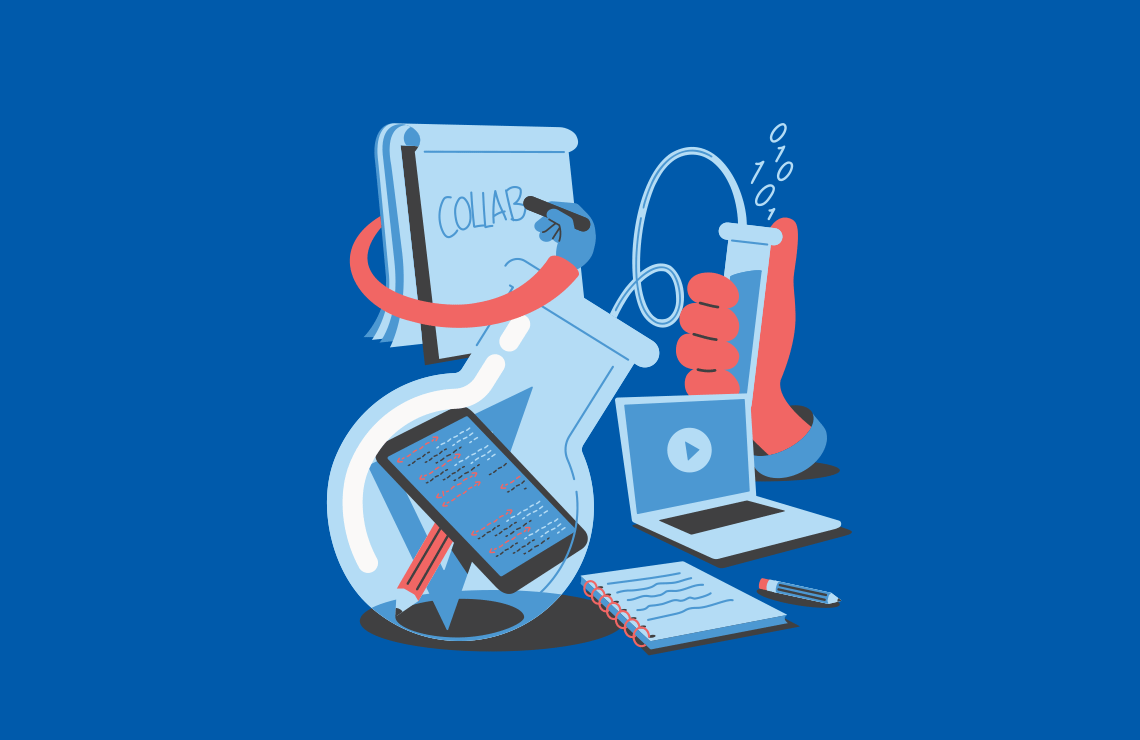
Edtech pushes lifelong learning
During the Corona crisis, schools have struggled to bring education online. But the pandemic has only shed light on a need that was already there. And now the edtech market is growing rapidly.
Imagine an early morning in 2030. We are in Båtsfjord, in the North of Norway, where Roar has just logged on to his computer at home, ready for a new day of studying business interaction and international entrepreneurship. After 25 years in fishing, he has gone ”back to school” for an education that will give him new opportunities, hopefully in the international market. Roar and his fellow students from 20 different nations study in a digital, seamless system that’s available anytime and anywhere.
Roar is not in a unique position by continuing his lifelong learning or finishing an international degree from his home. He is an example of a modern learner seeking an education that is not easily replaced by automation and artificial intelligence, but rather is focused on creativity and collaboration.
A market that is growing
Today we’re still quite far from this scenario. Education within lifelong learning is grossly under-digitized, with less than 3 percent of expenditure on technology. At the same time the digital education market has grown rapidly during the last decades. The total expenditure in edtech is expected to double, reaching 342 billion USD by 2025, with an expected compound annual growth rate of 12 percent in the period.
2019 was also a record year for edtech investments, with 187 deals totaling 1.2 billion USD. Of all edtech investments in Europe, 18 percent are invested in the Nordic markets, indicating a growing market in this region.
So we’re on our way. This development is accelerated by the evolution of working life in the 21st century, which has given rise to the development of new skills. More and more people are willing to educate themselves as a part of lifelong learning. Higher education matriculation data from 2020 shows that the applicants were older than ever before, on average. This can be partly attributed to the Corona crisis, during which a significant part of our workforce lost their jobs or were furloughed. But it is also a sign of these new learning habits – which need new solutions.
The biggest challenge to speed up digitization is to replace physical meetings and classroom lectures – which are still an important part of university education. This traditional type of learning is very institutional and people-driven. Thus, a key opportunity is to replace classroom training with edtech, but many content creators lack the knowledge to make the change. Due to the number of stakeholders involved, such as universities, professors, government, international institutions etc, the speed of digitization in the education sector has been estimated to be at about one-fifth of the speed seen in other sectors.
Education is a tool to improve health, equality, peace and stability
In the Nordic countries, there are some new players in this market, including Coursera, EdX and Udemy (Inspera), international companies with local connection in the Nordics. The traditional Nordic educational institutions have not yet tried to take a significant role. So, there are still openings for strong players to take a broad position as a ”change agent” for lifelong learning. Not just for distribution or a marketplace, but also to contribute to delivering today’s classroom training with edtech solutions – and with the opportunity to reach a broader, international audience.
Education is one of the greatest tools we have to reduce poverty and improve health, gender equality, peace and stability. This is easily underestimated in the Nordic countries, but nevertheless important to remember. For communities, education drives long-term economic growth, innovation and fosters social cohesion. All of these are strong incentives for continued growth of the edtech market. For Roar, digital education will open the door to new job opportunities. It will stimulate economic growth in his local community. And it will give the world a new, global employee.

Ragnhild J Buch
Business Developer
Years in Schibsted
3
What I’ve missed the most during the Corona crisis
Meeting colleagues on a daily basis.
The ecosystem that nurtures giants

The ecosystem that nurtures giants
They are obsessed with customers’ needs, innovation and agility is crucial and they both compete and collaborate within. Companies working as market-oriented ecosystems have their own dynamic – and can grow into large dominators like Tencent, Amazon and Facebook. Here’s how it works.
We are living in an ever-changing and self-reinforcing cycle of technological development that continuously raises the bar for customer expectations. This in turn fuels the relentless forces that rapidly shape markets. From a macro perspective, this dynamic results in some interesting movements. We see a concentration of:
- Infrastructure providers that offer highly scalable and far-reaching networks that deliver standardized services.
- Aggregation platforms and marketplaces that enable connections among fragmented players.
- Agent businesses that serve as trusted advisors to consumers across the growing numbers of fragmented niche products and services companies.
As a large company, and especially if you are an incumbent in your current market, your likelihood for continued large-scale success relies on your ability to either become a dominant platform, infrastructure or trusted advisor company. If not, you should expect to be outperformed by smaller, faster and more innovative competitors empowered by the platforms.
Create and capture customer value
In an attempt to understand how some of our most successful companies have prospered in these hyper dynamic markets, we have, however, found another compelling path – to transform your company into a market-oriented ecosystem that thrives by being both highly explorative and scalable at the same time. Becoming a company that inhabits the previously incompatible strengths of both mature companies with a culture of exploitation and start-ups with a culture of exploration.
Market-oriented ecosystems’ ultimate purpose is to create and capture customer value. Typically, this is achieved by bringing together multiple players of different types and sizes in order to create, scale, and serve markets in ways that are beyond the capacity of any single player.

Ecosystems are empowered by enhanced and simplified connectivity that enables the participants to discover and develop new products, services and business models. Discoveries that would not be possible without the access to the full spectra of the ecosystem’s capabilities, especially the collective ability to learn, adapt, and innovate together. The sustained success from market-oriented ecosystems is achieved through both competition and collaboration. In some ways it is like a thriving bazaar where you both can compete with your neighbors’ shops but also collaborate to achieve your mutual goals.
Based on a common platform
Studies show that companies operating as market-oriented ecosystems thrive and consistently outperform other types of companies when competing in hyper-dynamic markets. The most famous examples include Tencent, Amazon, Supercell, Alibaba, Didi, Facebook, Google, Huawei and Haier, that together nurture some of the world’s most well-known brands.
The operating model of a market-oriented ecosystem is based on a common foundation or platform that all teams use and rely on in their daily work. This foundation consists of four components:
- External services: Purchased on demand from market leaders (cloud storage, productivity tools, etc.).
- Internal services: Aims to solve highly differentiated needs that cannot be solved by external services. These internal services are always operated by a dedicated and customer-centric team. Ideally no difference exists between operating a team that is focusing on an internal or external customer.
- Exchanges: Transactional systems that minimize barriers of cooperation that drive value creation within the ecosystem.
- Functions: Supports platforms, teams and functions on specific topics (HR, finance, legal, communications, marketing, etc.).
The key ingredients of the ecosystem are the teams that offer services and products to other teams within the ecosystem and/or to end users. Teams operate like small startups but have full autonomy to develop, prototype and test ideas with support from the entire ecosystem. Accountability is created by having clear, agreed upon objectives and measurable targets. As they fail or succeed, the teams are readily started, stopped, split or merged in order to maximize learning and success rate for the ecosystem as a whole. The accountability, clarity and flexibility make teams truly committed to achieving customer value by being close to the market and being able to quickly shift focus in changing market dynamics.
Leaders nurture culture
A relatively small leadership team exists with the main purpose of nurturing a common culture for the ecosystem, decrease barriers of cooperation by developing governance and to set a compelling vision and strategic priorities that align the ecosystem. Examples of governance mechanisms on which market-oriented ecosystem leaders outperform are performance accountability, idea generation, talent pipeline, information sharing and overall collaboration.
Over time as companies develop into market oriented ecosystems, they begin to exhibit four common essential capabilities: Outstanding external sensing with strong focus on market dynamics, an almost religious customer obsession with a relentless focus on solving customers’ jobs to be done, continuous innovation throughout the ecosystem, including an ability to always question the status quo, and finally agility everywhere that allows the whole company, even at a massive size, to quickly adapt to changing dynamics.
It is clear that companies that have been founded during during the digital era of the last two decades have a clear advantage when nurturing market-oriented ecosystems. However, there are examples of older companies and parts of larger companies that are transforming themselves into market-oriented ecosystems.
How do they do it? There are three key ingredients: establish a bold yet compelling long-term vision, transform step by step, and always act with a generous mindset. The journey will be long, revealing and tough, but the good part is that you will harvest the low hanging fruits along the way and find plenty of value while doing so.
Want to learn more about market-oriented ecosystems? We recommend two books that offer detailed introductions into the operating model: ”Reinventing the Organization” by Yeung and Ulrich (2019) and ”Future Legends” by Krings-Klebe, Heinz and Schreiner (2017).

Lotta Wollentz
Head of Strategy at Blocket
Years in Schibsted
4
What I’ve missed the most during the Corona crisis
Spontaneous micro updates and energy boosts from colleagues

Ian Vännman
Head of Strategy at Schibsted Next
Years in Schibsted
21
What I’ve missed the most during the Corona crisis
Serendipity – there are fewer random surprises when you spend
most of your time at home
Tough news gets translated for young readers
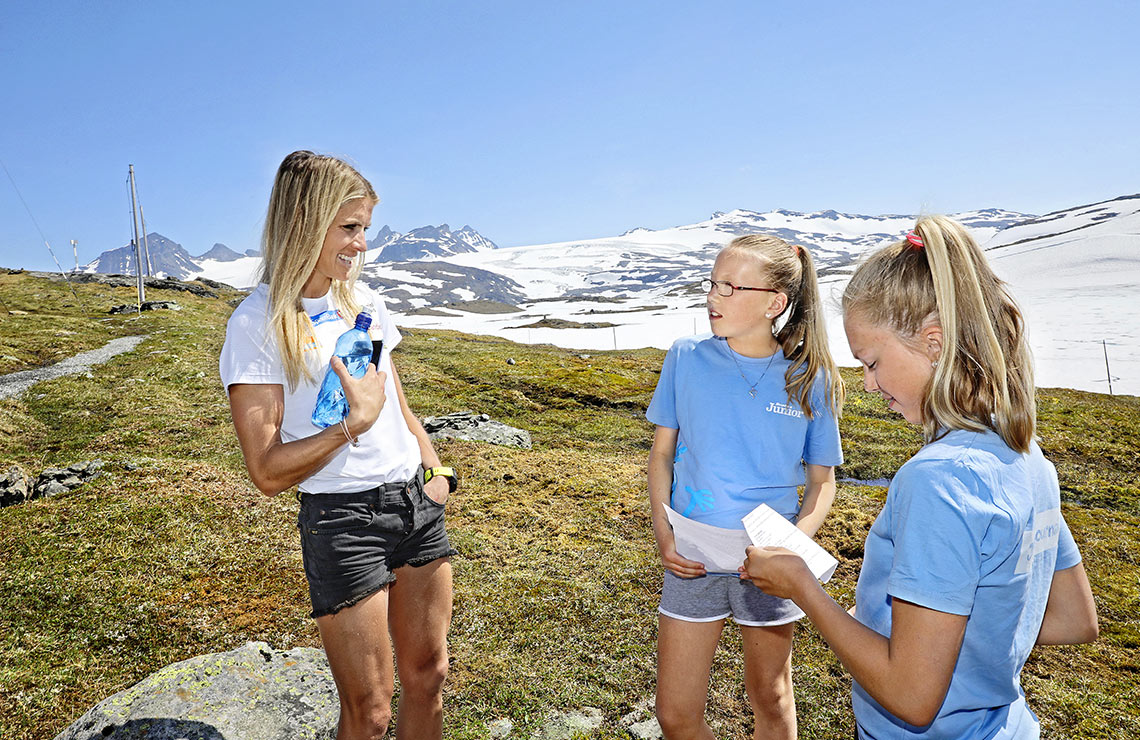
Tough news gets translated for young readers
Aftenposten Junior is something as exceptional as a printed newspaper success. It all started with the need to explain a tragedy to children – now even adults read it to really understand the news.
In July 2011, Norway was shocked and horrified by the terrorist attack in Oslo’s government quarter and on the island of Utøya. Naturally, Norwegian children had many questions about what had happened, and parents and teachers struggled to find the words to explain the incidents on a level that the young ones could understand.
It was about this time that the idea of launching a newspaper for kids arose in Aftenposten. The first edition came out in the spring of 2012, coinciding with the opening of the trial against the terrorist responsible. That was the start of explaining a many difficult and complicated news incidents, which is what Aftenposten Junior still does today. As editor, I get to meet a lot of curious and smart kids with thoughtful (and challenging!) questions. I promise you I have the most interesting and meaningful job!
A huge success
At the time of the launch some critical voices said a print edition would never gain popularity. Adult print newspapers had been declining for years, and there were even darker clouds ahead. Children were embracing digital services such as games and social media, and getting young ones to read a newspaper seemed like a mission impossible. Eight years later though, it is safe to say that Aftenposten Junior has become a huge success. The circulation numbers steadily rose and have now stabilized around 30,000, and the brand Aftenposten Junior is well known among Norwegian children, to the extent that the editorial staff receive enormous amounts of e-mails and letters every week. But how did this all happen?
Over the last years, user research has become a very important discipline in all product development. In Aftenposten Junior, the editorial team was involved in user research right from the beginning, and it became apparent that this is a crucial part of the methodology to write engaging news stories for a young audience. Instead of doing user research now and then, it has become a continuous process that involves the readers at all times.
In the research, our journalists will ask kids how much they knew about a news story, and ask them what they would like to know. Later, the journalists have kids read the finished story to pinpoint difficult words. After a while, the concept of ”Aftenposten Junior reporters” also emerged. Kids would interview top politicians and celebrities, and they had the most brilliant questions.
When writing for kids, there are certain challenges that our staff writers are very good at solving. For example, there might be a lot of historical aspects to a story, like when writing about George Floyd this summer. To sum up centuries of history and social studies in a very short text is harder than you think. The tough nut is to simplify the language without losing the important details and nuances. Often, our journalists will rewrite the text several times with their editor before it’s good to go.
The presentation of the news stories is also a very important part of Aftenposten Juniors success. Visual elements will trigger most children’s reading desire. Outstanding photos from Aftenposten’s photographers, striking illustrations and extensive use of infographics make the pages look inviting and give the readers a lot of information without overwhelming them with text. The cartoon format is also a good way to explain complex issues, as it combines several illustrations with small text pieces.
A growing family
The Aftenposten Junior universe has grown bigger than only a print newspaper. For several years, Aftenposten Junior has hosted different events, like the wildly popular Minikloden. The successful cartoon Grønne greier has launched two hard cover books, one of them in South Korea. Aftenposten Junior is also producing a podcast, Juniorrådet, where kids are talking about big and small challenges, like being nervous before a performance, or falling in love. This fall we will also launch a news podcast.
In 2015, there was a new addition to the family, with the launch of sister newspaper SvD Junior, from Svenska Dagbladet in Sweden. The two editorial teams co-operate on some of the content, and in 2019 another Junior was born when Postimees Juunior launched in Estonia.
The spring of 2020 was a very special time all over the world because of the Covid-19 situation. In Norway, all of the schools shut down on March 12th. The day after, Aftenposten Junior announced that we opened the paywall on our digital edition, so that all children in Norway could have access to reliable information at a time when their lives were turned upside-down. Teachers were ecstatic when they could give their pupils engaging reading assignments, and we noticed that some teachers made questions, puzzles and quizzes tied to the editions. They said that they loved the current news stories that spoke directly to the kids, and that it taught them important things in a fun way.
A big digital leap
During the time of homeschooling, teachers and pupils took a big leap in their usage of digital equipment and services. In fact, there were close to 800,000 openings of the digital editions of Aftenposten Junior during the period that the schools were closed.
This gave us the idea to make a special digital product for schools, where teachers could easily find the content they were looking for and share it with their class. After extensive UX research, the team of Aftenposten Junior skole are now on their way to creating a full on educational resource, planned to launch in late 2020. This is timed well with the introduction of a brand-new curriculum in Norway’s schools this fall, one that is supposed to encourage the use of current events.
So, the future looks bright for Aftenposten Junior. Even though breaking news is faster than ever and the number of news sources is plentiful, there is still a need for a good explanation of current events. This might be why grown-ups tell me all the time that when they read Aftenposten Junior to their kids, they finally understand what that story was all about.

Mari Midtstigen
Editor, Aftenposten Junior
Years in Schibsted
3
What I’ve missed the most during the Corona crisis
Eating lunch with my colleagues
Subscriptions drive new businesses

Subscriptions drive new businesses
Is the concept of ownership on its way to extinction? Subscription-based businesses have increased their revenues by more than 300 percent over the past seven years. Schibsted is looking into how to expand this model into new kinds of offerings.
I have to make a confession.
I binge.
If I find a new TV series I like, I could easily watch all the episodes of all the seasons in a matter of days. For me, imagining a world without Netflix – or similar subscription-based streaming services – is almost impossible. But such a world existed not too long ago.
Netflix was introduced to the Norwegian and Swedish markets in 2012, after having launched its streaming service in the US in 2007. In 2015, Netflix had grown to 70 million subscribers. Today, they have 167 million. When the new streaming service Disney+ launched on the American market last year, it amassed 10 million subscribers in just one day. Nine months later, it has grown to 60 million.

It is almost difficult to comprehend the massive growth subscription-based services have seen over the last few years. Internationally, more than seven out of ten consumers subscribe to one or more services, and the number is growing. The growth is largely driven by consumer demand; consumers want the convenience, flexibility and frequency that subscription models supply.
For businesses, the attractiveness of the subscription model is reflected in revenue growth. Subscription-based businesses have increased their revenues by more than 300 percent in the past seven years, significantly outperforming other companies. In the face of the Covid-19 pandemic, 76 percent of subscription-based companies saw a stable or even accelerated growth rate for their offerings. As a result, a growing number of industries and businesses are adopting the model.
Unparalleled growth in digital media
Schibsted has been in the subscription game for a long time, and we’ve seen unparalleled growth in digital media subscriptions over the last few years. As the Corona pandemic swept our countries, the hunger for news, information and entertainment drove our subscription numbers to new heights. As of October 2020, we have more than 840,000 digital subscribers across our Norwegian and Swedish brands. The appetite for digital news subscriptions has never been greater.
However, subscription is no longer a game that only media brands can play. Industries as diverse as mobility and home appliances are increasingly adopting subscription as a business model. Today, you can subscribe to products and services as diverse as a car, a dishwasher, and a unicorn-themed ”mystery box”. Whatever your niche is, there is a subscription-based product for you.
At Schibsted, we are following this widespread adoption of subscription-based models closely. Next, a division in Schibsted that invests in digital startups, is increasingly looking at and making investments in subscription-based services, including the podcasting platform Podme. In addition, our marketplace division is investigating a variety of subscription-related opportunities. We see that the subscription-related expertise and experience we have built up for years within our media division can be utilized in new ways, in very different parts of our organization. Our goal is no longer just to increase the number of media subscriptions we have – but to have more subscription-based business throughout Schibsted, and to deepen the relationships we have with subscribers today, by giving them subscriptions that offer them more and more relevant products, services and content. Being subscription-driven is about catering to genuine user needs and wants.
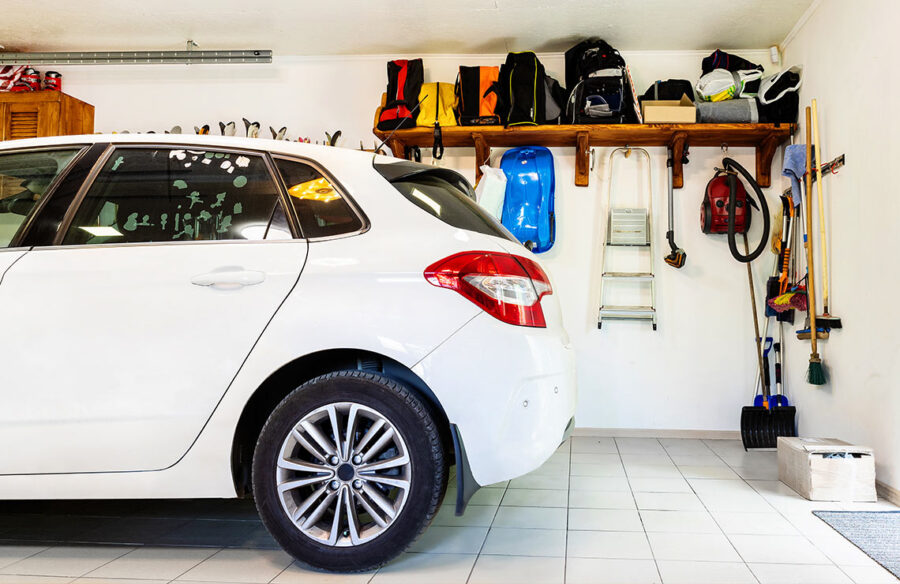
So, what do users want? Well, no matter the product or service, they will most likely prefer the option that is simple, convenient and easy to understand. Owning a product is often none of these things. In fact, product ownership is often a hassle. Owning something means that you have to pay up-front for a product that you do not know how many times you will actually use. Owning something might mean you have to pay for or spend time on the maintenance of that product. And in the age of rapid innovation and technological advances, owning something might also mean the inevitable frustration of watching your product become obsolete as new innovations enter the market.
We want access instead of owning
So, fundamentally, most of us very rarely actually want to own something – rather, we want access to what that product or service can offer us in value, right when we need it. Take washing machines as an example. Do you really need to own a washing machine? Or do you need your clothes to be clean, at a reasonable cost, with minimal effort?
Increasingly, research suggests that consumers favor ”access over ownership”, and 57 percent of adults worldwide say they wish they could own less ”stuff”. This trend is often known as ”the end of ownership”. And as ownership ends, so begins the era of usership – where the focus is on using and paying for what you need, rather than owning it. Just like with subscription-based products.
From a business perspective, the end of an era that has served business owners and shareholders well might seem intimidating. However, rather than being threatened by change, joint trends of usership and subscription could result in vast opportunities going forward for both Schibsted and others – within existing business, across businesses and within new product areas. By using our assets smarter and investing in the subscription economy, we believe we can secure existing business, create opportunities for future growth, and most importantly: cater to genuine user needs.

Hanne B Finstad
Head of Subscription Hub
Years in Schibsted
8
What I’ve missed the most during the Corona crisis
Hugs
Leaders under pressure

Leaders under pressure
The responsibilities of business leaders have dramatically changed with Covid-19. We now need to thrive in a new reality while also maintaining innovation and high performance. This puts a lot of pressure on leaders. Mette Krogsrud, EVP People & Corporate Affairs, shares some of Schibsted’s actions to support business and leaders.
It is hard to recall what 2020 was pre-Corona. As I write this, the spread of the virus is still increasing, and we still find ourselves working from home. How will the pandemic impact future business and the way we work? Will there be changes for the better? What about Schibsted, our family of businesses and brands – what will we make of this crisis?
The American economist and Nobel prize-winner Milton Friedman once said, ”Only a crisis – actual or perceived – produces real change”. And these past few months confirm his statement. We don’t know what the future will hold. But we do know that it will change.
We need empathic leaders
It is said that in times of crisis, a leader’s true self comes out. We know from before that empathic leadership is more and more important in our rapidly evolving and complex world, and now more than ever as people are having to cope with disrupted, detached and uncertain circumstances. How may leaders balance their focus on crisis leadership while simultaneously drive business continuity? This is certainly a balancing act and not an easy transition. None of us were trained to lead in a pandemic and new leadership muscles are certainly being tested and trained.
To move forward in a crisis, leaders need to cultivate four behaviors in themselves and their teams, writes Nichols, Chatterjee Hayden and Trendler in Harvard Business Review. They must decide with speed over precision, reliably deliver, engage for impact, and adapt boldly. Inspired by these guidelines, let’s explore some actions Schibsted has taken which adresses these four behaviors.
The beginning of March was chaotic, and the situation was changing by the hour. Schibsted established a Covid-19 task force on March 2 to process available information and rapidly make some bold decisions. Even though the information was incomplete, and emotions and anxieties ran high, we decided to have all employees work from home, starting March 11. Our CEO, Kristin Skogen Lund, held an epic all-hands speech to our colleagues. Heartfelt and calm, she encouraged us all to ”keep calm and carry on. Be safe, look after each other and we will get through this together.” Our 5,000 employees headed home and started getting acquainted with the new reality, clueless as to how long it would last. The majority of us have been working from home ever since. Norway announced a lockdown of the entire country on March 12.
In the first weeks of home office, there was a great need for information and direction among our colleagues. Our Corona task force stayed on their toes, ensuring constant guidelines and communication across Schibsted. A few weeks in, 97 percent of Schibsted employees responded that they were satisfied with Schibsted’s handling of the situation and an impressive 85 reporting a high level of motivation in their work!
A collaborative spirit
To reliably deliver, according to the HBR report, leaders need to align team focus, establish new metrics to monitor performance, and create a culture of accountability. Never have I experienced such a collaborative, innovative spirit, caring leadership and colleagueship, and willingness to change across Schibsted as I did in those first weeks of the crisis! Our second-quarter results and giant acquisitions this summer are certainly manifestations of how our people reliably deliver, with transparency, speed, and courage. The Schibsted share price reached an all-time high and financial forecasts were no longer looking as bleak as they did when the crisis first hit. Our investors, and our own confidence in Schibsted’s ability to deliver even in the midst of a crisis, certainly bounced back into place.
Strong leadership drives high engagement and high engagement drives great results. Through our pulse surveys we identified some areas that were the most important to our colleagues. These areas included: a sense of belonging through interaction with colleagues, information sharing, well-being, and leadership. Leaders across Schibsted have made and are still making many meaningful small and big steps to address these needs.
A toolbox for leaders has been developed – filled with actions meant to engage and fuel interaction and wellbeing even when the casual encounters we all miss are no longer available. These include for instance walk-and-talks, park meetings, after work video conferences – and endless other video conference initiatives across teams and geographies.
In September we launched a state-of-the art engagement programme, ACT, which equips all our leaders to drive change and engagement in their teams on a continuous basis going forward. Now it’s all about engaging leaders and teams to create an impact!
Supercharged change
There is no such thing as ”business as usual” anymore. Almost 100 percent of the workforce is now working from home – some with their kids running around them. Change has been supercharged in the pandemic accelerator and we have all been forced to adapt. The adrenaline surge from the first lockdown shock is fading. Yet, future oriented leaders get ahead of changing circumstances and take action and experiment their way to the new normal. Which begs the question: where do we go from here?
At Schibsted we have launched a Future of work project (read more about it on the page opposite) in a quest for answers – aiming to turn challenges into opportunities. The project team works actively with gathering ideas and learning from experiments internally and externally. Our dream is that our ways of working in the future will make us an even more innovative, agile, collaborative, sustainable and attractive place to work.
I am convinced that how we work will never go back to how it was before Covid-19. How we will work in the future depends on the radical ideas that are lying around as we adapt and develop. Schibsted wants to fertilize the soil from which radical ideas can flourish. We want our leaders and colleagues to experiment, learn, and share on our journey to develop even more innovative and sustainable organizations. It won’t be easy, but as Kristin Skogen Lund said upon the traumatic lockdown day on March 12th: ”Schibsted has endured many crises before and even proved an ability to thrive and grow through troublesome times.” Now our big joint challenge is to design our future of work. I truly look forward to being part of the journey and experiencing the many experiments and radical ideas that will emerge, with or without the virus circling. It’s time to produce real change.

Mette Krogsrud
EVP People & Corporate Affairs
Years in Schibsted
7,5
What I’ve missed the most during the Corona crisis
Time with my family and friends in London
My home office struggle

My home office struggle
Remote first is the new normal. But what about those of us who desperately miss meeting our colleagues, who know how to navigate the office, and who don’t always appreciate mixing work and home space? Will we be outnumbered by a wide world competition or do we just need to break free to truly see the benefits? Join Dan Ouchterlony in his struggle.
Desperate for a human connection
It is March 24th, 2:49 in the afternoon and I have just wrapped up another video meeting. It has been the better part of two weeks since I met a colleague in the flesh, the very same people I normally see several days a week and with whom I thoroughly enjoy chatting, debating, teasing, analyzing and brooding. I deeply miss the instant gratification of office work.
Missing it to the extent that I am about to break corporate policy and possibly Public Health Agency corona-protocol and sneak over to a colleague’s home to meet up. Just sit and work together. Like we used to. Talk about things. Work. Comment on something. Work. Grab coffee. Work. A few of us have plotted this act of rebellion in sheer desperation for a human connection.
During a team meeting we sit in separate rooms in my colleague’s house, so that the others don’t know we broke curfew. Then we reconvene in the living room. As the afternoon becomes evening, we share a bottle of wine and a conversation over a meal, and in the taxi home I feel peculiarly energized. The time we spent was productive, the work we did was creative, I rationalize as the evening streetlights glare through the windows of the car. I cannot rationalize the fact that we hugged each other on the way out, but it felt really good.
Chi mangia solo, muore solo
The kitchen table is where the family spends most of our quality time together as we break bread, look each other in the non-digital eye, and share. As we partake in the deeply cultural, social and symbolic ritual of food, the family bonds deepen. I fondly remember feasts with my parents and grandparents. Thus, I have come to associate our round wooden kitchen table with a positive moment in time and as a positive place in space. Sitting down on the oak Windsor’s sheepskin pad infallibly puts me in a positive state of mind. At least it used to.

Today is April 20th, 9:35 in the morning, and I am anything but positive, despite being in a favorite place. My right shoulder is already stiff, after only an hour of work, and my mind is churning from worry over missing our Q1 targets and a colleague who is seriously ill with Covid-19. As I try to stretch and massage the nape of my neck, I see the post-breakfast mayhem of spilt coffee and unfinished dishes on the table, and the breadcrumbs in the corner of the room sharp in the unruly morning sunlight. An hour earlier I sat down my Macbook in a hurry as my 7-year-old needed more time than usual to get to school this morning. As I fixed my gaze on a puddle of tomato seeds, that just a moment ago were part of a delicious breakfast sandwich, a sense of dread and disgust came over me. Why have I brought the serpent into Eden, brought work into my family sanctum? What if I sit down for dinner tonight and think of an investment pitch instead of my family? I decided I need another place to work, and set up station in the master bedroom fully aware the ritual of work in this particular location will seep into the very precious ritual of end-of-day conversations with my wife. And work would trouble my sleep.
The more contact I have with humans, the more I learn
Conversations with entrepreneurs are normally the best moments of my working day. Their passion and energy is contagious, their unwarranted faith in the future and personal commitments inspiring, and I feel privileged to sometimes be part of their lives. In ”Skin in the Game”, philosopher N N Taleb explains how society is, in sum, a beneficiary of the results of entrepreneurship, as it evolves and progresses, while the median entrepreneur is in fact a victim. We do not read about them that often but know that the road to success is littered by failed startups, shattered dreams and burned out founders. To be an entrepreneur is to face overwhelming odds with little more than faith – and persevere. I salute you!

Today is May 13th, 4:35 in the afternoon, the kids will be home from school soon, and I have just been scolded, insulted and yelled at by a disappointed entrepreneur whose proposal I refused. My mind reels as I try to calm my bottled-up anger and shame with deep breathing, which is surprising in a Scandinavian setting, as losing control is unprofessional in almost any circumstance. Very rarely do these ranges of emotions seep through our stoic and rational facades. This is a professional failure for me. Saying ”no” to an entrepreneur is one of the singular moments of truth in professional investing, I would argue, where I hold someone else’s hopes for the future in my hand and crush it. Just as in a human relationship, I must crush it so gently, kindly, and constructively that I am – at least later – thanked for breaking a heart. This is why many in my profession practice ghosting, it-is-not-you-it-is-me, or other avoidance strategies. I think through my own actions and wonder why my concerned and empathic look and carefully crafted arguments did not work as well as they normally do, or how I so capitally misread the mood in the meeting? I give myself credit for only formulating the sharp responses to the outburst in my head, and for keeping my emotions rather hidden, but on the other hand, I shamefully recollect alt-tabbing away from the Google Meet window, wavering in the stream of emotions, and distantly humming along and excusing myself while gazing at the desktop wallpaper of my children. Are we losing the human touch in video meetings, all becoming Keyboard Warriors, not sensing or perceiving our disintermediated 2D-selves? Did I just do the equivalent of breaking up via text? I continue breathing. It is my daughter’s birthday today and I need to be at my best in a few minutes as we will celebrate together.
Co-working, in my home
It is Wednesday morning, June 2nd, around half past seven in the morning, and I am walking to work in the morning summer sun. The bridge from Gamla Stan to Central Stockholm is being repaired so I take the boat a short hop from Riddarholmen, as I watch heavy divers work on the pontoon construction. The cleaning company comes every Wednesday morning at 08:00 to freshen up our apartment. An everyday, tax subsidised luxury for the Swedish middle class, performed by the working class. That is why I now take a walk to the office to check the postal mail on Wednesdays. I might get a letter or two a month, but it needs to be checked regularly, right? Honestly, I am avoiding the cleaners. I cannot focus due to the noise of the vacuum cleaner, I tell myself, but frankly I cannot stand to see the work of cleaning being performed by someone else, someone I paid to do the work, in front of my eyes. I am too self-conscious of the class and power imbalance. And ashamed of myself for watching Netflix after a long day of work rather than vacuuming my own floors. Is that not terribly Swedish of me? I need to work on this, I decide, but I did not expect to cowork with strangers when I signed up for a cleaning subscription.
In contrast, I absolutely love coworking with my wife in our home. We typically sit in each end of the apartment, me in the bedroom, her in the living room, doors closed to muffle the sounds of endless video conferencing. We meet up in the kitchen sometimes, brew a fresh pot on the Technivorm Moccamaster together, and chat for a minute. Oftentimes she is back-to-back in meetings, so I stumble to the kitchen to pour myself a cup of ambition and sneak a peek at her from the kitchen door, working on the living room table, looking down into her laptop screen. I make some kind of sound, blow an air kiss, hold up the coffee pot pointing my finger in a silent question: refill? Who am I kidding? She always nods, so I tip toe over to pour a cup with a dash of milk and get a silent smile and a wink. My next meeting is usually a good one. What a privilege!
The future of work, and life
The vision of a remote-first workplace is a strong one, and shortly after the pandemic induced lock-downs, tech giants like Facebook, Twitter and Google announced remote work was now the new normal. Directors and Vice Presidents of Remote Work were hired and Zoom rocketed from tens of millions to hundreds of millions of users. US workers stopped commuting to the tune of 30-40 billion miles per month, and when they discovered that their big-city apartments were suboptimal workspaces, they started moving. According to real estate brokers and consulting firms interviewed by CNN, the number of signed leases for condos and co-ops in Manhattan dropped 50–60 percent in July. Where did people go? The rich people went to the Hamptons. The middle class to single family houses outside the city. In a pleading tone, Governor Andrew Cuomo has been begging New Yorkers to return to the city so they can continue contributing to the local economy: ”We’ll go to dinner! I’ll buy you a drink! Come over, I’ll cook!”
That was just the immediate impact. Is it becoming structural? Recently, fintech giant Stripe announced a USD 20,000 paycheck to employees that wished to leave cities in return for a 10 percent cut on their paychecks. When you can work from anywhere, why pay a premium for San Francisco, Manhattan or Seattle? When you are not commuting, countryside living certainly has its merits. And when your workers are remote, why not upgrade them with even remoter and cheaper workers?
Remote work visionary and entrepreneur Chris Herd, founder of Firstbase, thinks this is inevitable and predicts that a majority of desk jobs will be remote by 2029.
As I explain my doubts and emotions to Chris, he kindly reminds me I am caught in the middle. His hypothesis is that I haven’t reaped the full benefits of remote first. I am emotionally and structurally still connected to the office and its routines and modes of work. Break free and you will find time and space to be human, he says. ”Don’t you miss meeting your colleagues?” I ask. Chris says Firstbase is a remote-first company, and of course they will meet up soon. But will he bring the whole team together in Scotland, where he happens to live? Or will they all meet up in the Canary Islands, in a conference hotel suited to the task of bonding a startup team together? Certainly flights and accommodation are cheaper there off-season than in a metropolitan area.
I think about it, and perhaps the real reason I like the office is the fear of the unknown. I know how to navigate an office. How to be effective. I can protect my turf as my skills and relationships are a local scarcity. At some deep level I can justify my own worth. Perhaps what I am scared of is when the world of the desk worker, my world, truly becomes flat, and I compete with the best of the best from Bogota to Baghdad to Bangladesh. What will a 45-year-old office-rat brought up in a cubicle be worth then?
Predictions on the future of work and life
By Chris Herd, founder of Firstbase (abridged and slightly edited).
Diversity and inclusion
The most diverse and inclusive teams in history will emerge rapidly. Companies who embrace it will have a first-mover advantage to attract great talent globally. Companies who don’t will lose their best people to their biggest competitors.
Output focus
Time will be replaced as the main KPI for judging performance by productivity and output. Great workers will be the ones who deliver what they promise consistently. Advancement decisions will be decided by capability rather than who you drink beer with after work.
Talent wars
Remote work is the perk that is most sought after by workers globally. This will only increase. Remote-first companies will disrupt every incumbent who doesn’t/isn’t able to make that transition.
Rural living
World-class people will move to smaller cities, have a lower cost of living & higher quality of life. These regions must innovate quickly to attract that wealth. Better schools and faster internet connections are a must.
Working too much
Companies worry that the workers won’t work enough when operating remotely. The opposite will be true and become a big problem. Remote workers burning out because they work too much will have to be addressed.
Bullshit tasks
The need to pad out your eight-hour workday will evaporate, replaced by clear tasks and responsibilities. Workers will do what needs to be done rather than wasting their time trying to look busy with the rest of the office.
International talent
Great for developing countries. International companies will have access to talent globally. Access to opportunity will be decentralized.
Accessible jobs
Remote work will make work more accessible than it has ever been. Nothing will stop workers getting the job they deserve because there will be no obstacles in their way.
Older workforce
Boomers may be standing in the way of the remote work revolution happening quickly, believe least in its benefits, and lack the trust for it to emerge. Ironically, remote work will allow them to work far more easily later in life.

Dan Ouchterlony
SVP Schibsted Financial Services
Years in Schibsted
15
What I’ve missed the most during the Corona crisis
My colleagues
AI – a toolbox to support journalism

AI – a toolbox to support journalism
As artificial intelligence makes its way into editorial products and processes, media organizations face new challenges. They need to find out how to use this new computational toolbox and how it can contribute to creating quality content.
Do you find human-like robots creepy? You wouldn’t be the first to feel that way. ’The Frankenstein Complex’ was introduced in novels by Isaac Asimov already in the late 1940s as a representation of human beings’ intricate relationship to humanoid robots. While coined in science fiction, this term has found its footings in very real scenarios today, based on key areas of concern related to robots replacing our jobs.
The concerns are not unfounded for. There are indeed a wealth of robots (or programmable machines) employed across the globe, rendering many human workers in sectors, such as manufacturing, transportation and healthcare, obsolete. These industries are undergoing rapid transformation through the use of robotics and technologies such as artificial intelligence.
Creators and consumers of news express unease about the potential downsides of AI
These concerns extend into the media industry as well, where both creators and consumers of news express unease about the potential downsides of AI. To deal with these concerns, it is about time that we offer an alternative narrative to the Frankenstein Complex!
We might as well start with the basics. Robots are highly unlikely to enter newsrooms any time soon. What is already there, though, is a great new computational toolbox that can help human reporters and editors create and share high quality news content.

AI technologies are currently used in newsrooms in a myriad of ways, from data mining to automated content production and algorithmic distribution. While the possibilities know no bounds, the applications tend to be geared towards information processing tasks like calculating, prioritizing, classifying, associating or filtering information – sometimes simultaneously.
With recent advances in technological domains such as natural language processing and generation (NLP/NLG), the potential to leverage AI in editorial products and processes is increasing rapidly. In Schibsted, we are currently exploring the use of AI in news work in various ways, such as helping editors decide when to put content behind paywall, supporting journalists in tagging their articles and optimizing something as old school as printed papers in order to maximize sales and minimize waste.
AI learn from the past
The opportunities offered by AI are vast, but the technologies won’t help with every newsroom task. To responsibly leverage the potential of AI, reflecting on the unique traits of humans and machines becomes key.
AI systems are incredible tools for identifying patterns in data. However, this feature also renders AI technologies susceptible to reinforcing biases. And through technology such as face recognition systems and language translations, we have uncovered a key limitation to AI: the learn from the past.
Journalists, on the other hand, shape the future. They introduce new ideas through stories and reporting, often subtly influencing the ways our societies and democracies progress.
In order to recognize the unique skills (and limitations) brought by both sides of a human-machine relationship, we need to equip ourselves with reasonable expectations. We need to stop portraying AI as flawless human-like robots excelling at any task given to them. Instead, we should offer a narrative in which human beings are assisted by computational systems.
Let’s use a kitchen metaphor. If you are expecting an AI system to bring you a perfect omelet, you are bound to be disappointed. But if you are expecting the AI system to help prepare your ingredients – crack the eggs, grind some cheese, chop an onion – you are more likely to end up with a great lunch. You might have had to pluck some eggshells out of the mix or do a second round of onion chopping, but the overall process was smoother with the help of AI.
Training is needed
The idea of humans and machines working together is a topic gaining traction in academia, not least in the field of journalism where the term hybridization is increasingly used. One way of enabling constructive hybridization is to routinely practice decomposition. This means breaking down big news projects into smaller, more tangible tasks, so that news professionals can more easily identify what can be done by the machine and what requires human expertise.
To get to this point, news professionals should be offered appropriate training and information about the potential and the limitations of AI technologies. Introductory courses such as Elements of AI are a great starting point for anyone looking to familiarize themselves with the terminology. However, news organizations (Schibsted included) need to go beyond that and step up their game in terms of culturally and practically upskillling the workforce, aiming to bridge gaps between historically siloed departments.
We need to bring our full organizations onboard to understand how to responsibly leverage these new technologies. Schibsted is currently part of multiple research efforts at Nordic universities, such as the University of Bergen, NTNU in Trondheim and KTH in Stockholm, where we explore both technological and social aspects of these new technologies. Just as we do in academia, we need to take an interdisciplinary approach when equipping our organization with the skills needed to thrive with AI.
It is time for news organizations to take the lead in the industry’s AI developments
We put ideals such as democracy and fair competition at risk if we allow the global information flow to be controlled – implicitly and explicitly – by a few conglomerate companies. It is time for news organizations to take the lead in the industry’s AI developments. This does not mean that we need to match big tech’s R&D funding (as if that was an option…), but we need increased reflection and engagement regarding how we want AI to impact our industry, organizations, readers, and ultimately, society.
A pressing task for the news media industry is to ensure that AI in newsrooms is optimized for values that support our publishing missions. To do so, we have to stop talking about robots and focus on how newsrooms – and just to be clear, the human beings in them – can benefit from the capabilities of these new technologies. One such attempt can be found in the global industry collaboration JournalismAI run by Polis at the London School of Economics, which Schibsted is part of. There, newsrooms from across the world are joining forces to experiment and test the potential of applying AI to achieve newsroom goals. The collaboration serves as a great illustration of what would make a nice bumper sticker: Power to the Publishers!

Agnes Stenbom
Responsible Data & AI Specialist/Industry PhD Candidate
Years in Schibsted
2,5
What I’ve missed the most during the Corona crisis
Global leadership.
Photographers on the front line

Photographers on the front line
They are always first on site, whether there’s a war, an uprising – or a pandemic. In all of Schibsted’s newspapers, the Corona crisis has put the photographers on the frontline. Future Report presents some of their pictures and Ebba Bonde, head of the visual department at Svenska Dagbladet, shares her experiences handling worry and the loss of a colleague.
”This is what we have trained for throughout our professional lives.”
The photographer Magnus Hjalmarsson Neideman sounds angry but is probably more frustrated by the anxious atmosphere that permeates the meeting. We are in the middle of a discussion about how the editorial staff’s photographers should be able to work safely in a reality where an invisible virus is spreading fast, and where the death toll rises rapidly day by day.
Have a look at some of all pictures, taken by photographers at Schibsted’s newspaper, covering the Corona crisis.
For everyone present in the online meeting, one of the thousands of the deceased is always in mind. A week earlier, our colleague Tomas ”Onis” Oneborg died as a result of Covid-19. No one knows how he was infected, if it happened on the job or in his spare time – shock and grief are unspoken, but present. There is a fragile atmosphere where the fear of infection is in strong conflict with the desire to practice one’s profession.
Perhaps the difference between press photographers and other photographers has been made clearer than ever this year. The press photographer’s task is often to describe in pictures the situations that are impossible for the reader to actually experience. In the process of taking pictures that help people understand and discover complex issues, the press photographer often encounters risks. But press photographers are also trained to think of safety. To prepare well. Calculate the degree of risk and at the same time analyze the type of image that captures that special moment.
April 2017: It’s almost exactly three years before the grief-stricken meeting in front of the computer screens. It’s one week until Good Friday. Tomas Oneborg takes pictures of Easter sweets in Hötorgshallen in Stockholm.
Suddenly he sees people rushing for their lives towards Sergels Torg.
Tomas picks up his camera, and starts running against the stream of panicked people, towards the place where something had happened.
Less than a minute later, ”Onis” arrived, as the first press photographer on site. The unique, important and later award-winning photos from the terrorist attack at Drottninggatan are a piece of Swedish history today. For him, it was obvious, a moment he had trained for in his entire professional life.
May 2020: SvD have been given the opportunity to report from the center of infection and horror: an intensive care department where the battle between life and death takes place. The discussion is marked by everything that has happened this spring: Are we exposing ourselves to infection? How will patients and relatives experience it?
Staffan Löwstedt’s pictures took the reader to one of those impossible places. The story caused huge positive reactions when it was published late May. Was it worth the risk? In retrospect, it’s easy to say ”yes”. But careful deliberations were the basis for this particular story.
It was one of the most important publications SvD made during the spring 2020. In the same period, it became more obvious than ever that a press photographer always needs to be well prepared – ethically and in terms of safety.
But the remit is still to be in the front.

Ebba Bonde
Head of visuals at Svenska Dagbladet
Years in Schibsted
4,5
What I’ve missed the most during the Corona crisis
Hanging out with my parents
Gen Z values journalism

Gen Z values journalism
Generation Z creates what they consume and consumes what they create. But, according to a report from Tinius Trust, their approach to news is different. When consuming digital information, peers content is replaced by the work of journalists.
There are many truths circulating about Generation Z. According to the news publication Quartz, they are concerned with the environment, sustainability and gender identity. They are the primary creators of the content they consume. They are online ”almost constantly” and social media binds them together globally. But the new report reveals that Generation Z in Norway and Sweden has habits that differ from global truths, when it comes to getting updated digitally.
64 percent of the report’s respondents in Norway and 53 percent in Sweden say that they go directly to national media to keep updated digitally. National media is the most popular source to keep updated in Norway, and the third most popular in Sweden. According to Reuters Institute, globally only 16 percent of those aged 18–24 prefer to start their digital search for news with a news website or app.
The report from Tinnius Trust is based on surveys conducted by the research company Norstat and it covers the digital information habits of Generation Z (born 1995 – 2005) in Norway and Sweden.
A relationship built on trust
The results indicate that the strong, direct relationship between Generation Z and the media is a result of trust. It shows that 73 percent of respondents in Norway and 54 percent in Sweden trust that news media or journalists provide trustworthy updates digitally. Furthermore, 74 percent in Norway and 64 percent in Sweden agree with the statement ”I like that information I find digitally is fact-checked by a journalist”.
The scores are a little lower in Sweden. Some Swedes seem skeptical of a one-angle approach to digital news. The report shows a 21-percentage-point gap between the respondents’ use of search engines in Norway and Sweden, making search the most popular source to keep updated in Sweden. The youngest group (aged 15–20) in Sweden use social media just as much as search (61 percent) and find blogs more useful (10 percent) than other respondents. They emphasize the value of receiving authentic stories directly from sources.
Strong media brands are valued by Generation Z. The report shows that 30 percent believe it is very important that news they consume digitally comes from a well-known brand. Still, they do not recognize specific journalists. When asked to name a journalist, blogger or person to trust when consuming digital information, journalist Fredrik Solvang is mentioned by 18 respondents in Norway, and blogger Therése Lindgren by 15 respondents in Sweden – these are the two most mentioned names by over a thousand respondents in each country.
Generation Z has never experienced a life without smartphones. They are used to having a number of options available digitally and so, it is no surprise that they also crave options when consuming information digitally.
English as an option
Language preferences are one such an example. In the report half of the respondents prefer their official language when they consume digital information. Still, 38 percent in Norway and 36 percent in Sweden don’t care whether the language is Norwegian, Swedish or English. When speaking to respondents in smaller focus groups, some argue that media should offer English articles to those who don’t speak the official language and ensure access to news for all.
Length is another example, although the shorter the better. 71 percent in Norway and 56 percent in Sweden agree with the statement ”I like that digital information is short and explained rapidly”. Yet, 36 percent in Norway and 35 percent in Sweden agree with the statement ”I like that digital information is thoroughly explained and takes time to consume”. In the focus groups some argue that media should write short summaries with the option to ”read more”.
The favorite format of the respondents in the Tinius Trust report is to read a text. However, 38 percent in Norway and 31 percent in Sweden prefer a combination of text, video and sound when they consume digital information. The youngest group (aged 15–20) is more positive towards the use of video. Only a few percent prefer a sound file or podcast.
Also, Generation Z is not so eager to interact digitally with news content. 77 percent in Norway and 65 percent in Sweden disagree with the statement
”I like to publish text, video or sound files based on information I find digitally”. 42 percent in Norway and 38 percent in Sweden disagree with the statement ”I enjoy to like, share or comment on information I find digitally”. In the focus groups, respondents say they prefer objective news. A 19-year old man says: ”If I look up information from a serious source and random persons could interfere and state their own opinions, it would disrupt the core of why I chose a serious source to begin with”.
The relationship between Generation Z and the media is largely run without a paid subscription. According to Reuters Institute, 19 percent of those aged 18–24 pay for digital news globally. The report shows that 15 percent in Sweden and 20 percent in Norway pay for digital news. More respondents pay for music, video/movies and games digitally today, than for digital news. In the future, news exceeds games. Twice as many, 34 percent in Sweden and 40 percent in Norway, believe they will pay for digital news in the future.
There is at least one new truth about Generation Z in Norway and Sweden that should be carried along into the future: they value journalism
Some respondents in the focus groups frequently argued that news is a right and consequently it must be free and available to all. Eight out of ten respondents who are not willing for pay for digital news say it is because they find digital information for free. A 17-year-old woman says: ”To pay for news is unnecessary. You will find the right information if something significant takes place, and that information will be available for everyone”. In the focus group they also underline that while news is everywhere, entertainment is offered exclusively to subscribers. So, if digital news becomes just as limited, these opinions may change. Based on the report from the Tinius Trust, there is at least one new truth about Generation Z in Norway and Sweden that should be carried along into the future: they value journalism. And now it’s up to media businesses to turn that belief into subscriptions.
The Tinius Trust is the majority owner of Schibsted. Read the full report at Tinius.com.

Hansine Korslien
Head of communications, the Tinius Trust
Years in Schibsted
?
What I’ve missed the most during the Corona crisis
Live theatre
Every startup is a new species

Every startup is a new species
Where do startups actually come from? New companies come out of nowhere, grow exponentially and make a huge impact in the daily lives of millions in just a couple of years. Darwin can help us understand why.
The truth is a mobile army of metaphors, Nietzsche infamously wrote, and the best metaphor to grasp the essence of startups is perhaps to look to nature, specifically Darwin and the theory of evolution.
Charles Darwin tried to figure out how and why new species originated and how change and adaptation took place in nature. Much in the same way we try to comprehend how new companies come to life and the dynamics of society.
Through thorough world-wide research, Darwin reached an understanding of a universal principle of life, which he named natural selection. The principle of evolution means that inherited traits will be carried over from generation to generation only if the traits increase the likelihood of survival and reproduction – survival of the fittest.
Valid for all forms of life
However, Darwin was not able to identify the source of change. Mendel and later research found that DNA and random mutations are the actual driver of change, and natural selection decides which mutation will be carried over to the next generation. Darwin’s theory of evolution is valid for all forms of life and explains both the vast diversity and the incredible complexity of nature.
But is this relevant to startups? I think so, even if society can’t be compared to nature directly, the theory of evolution gives us clues to understand the origins and life of startups. They are also a special type of new species with particular traits, and they have to successfully adapt in order to reproduce and survive.
A striking example of how startup evolution works is the Norwegian company Zaptec. They originated in Stavanger, the oil capital of Norway, and they were incepted within the oil business, making a super tiny but powerful transformer suited to deep ocean drilling.
When I met the company back in 2014, they had left the oil industry and had set their eyes on other business areas. They were particularly enthusiastic about space exploration. The Zaptec team thought their transformation was perfect for drilling and exploration on Mars.
Fast forward five years and Zaptec has recently gone public on the Oslo stock exchange with a market capitalization just south of NOK 1 billion. Has their startup journey ended up in space, digging dirt on Mars? No, today you find Zaptec’s solution just underground, most likely in a large parking house owned by a housing association.
The explosion of electric cars in Norway in the past few years has led to a high demand for reliable, easy and secure charging. In large parking houses, that’s a lot easier said than done and it’s not an issue every single car owner can solve by himself. Based on their original transformer, Zaptec has developed a complete and simple solution for housing cooperatives and apartment buildings in need of facilitating convenient car charging on their premises.
A particular niche in the market
Zaptec’s solution is not only the charger in itself but a complete shared infrastructure for electric vehicle charging, including intelligent distribution of the available capacity between the charging stations and billing of the individual car owners. Zaptec have by mutation, trial and error been able to identify a particular niche in the market, in which they have created a powerful value proposition where there happens to be a high willingness to pay.
The company illustrates the bumpy road of a startup and how iterations, random concurrence of events and changes in the market may work together in order to create a solution that the users love. The roller coaster journey of Zaptec is probably something that all entrepreneurs may learn and get inspiration from, and in particular through Darwin’s spectacles.
The key is to find a problem (or niche in the term of evolutionary biology) that you are able to solve in a desirable way with an attractive price tag. How the solution has originated, how much sweat, tears and money that have been invested and the composition of the team is really not relevant, if the company is able to deliver on their value proposition with a sound business model. In startup lingo this is often referred to as product/market-fit and I think that is pretty close to Darwin’s principle of natural selection.
The theory of evolution might give us some clues as to how new companies originate and fill new niches in the market. But how is it possible that tiny startup companies can compete with big corporations in the quest for product/market-fit? Why didn’t a large and established player in the energy industry develop the same solution as Zaptec and in a considerably shorter period of time? They should have both the resources and knowledge to do so.
From time to time you will observe big corporations that come up with new and innovative solutions: Lyse Energi has been a successful pioneer within fiber-based internet access through the brand Altibox. Schibsted’s fast-growing company Helthjem is a new logistic solution provider based on an old newspaper distribution network. However, I think it’s fair to say that such initiatives are not the rule.
Often big companies will try to take advantage of their existing resources and know-how when they set out on a journey to innovate. That’s understandable, since they will try to figure out where they have a competitive advantage. The downside is that then you initiate the process with a solution already in mind, the efforts you are making are directed towards what’s possible to do. All too often that carries with it the endless and fruitless search for a problem to solve.
It begins with a problem
In my opinion most successful start-ups begin with a defined and often self-experienced problem of some kind, e.g. Daniel Senn made the highly celebrated learning game Poio in order to help his own hearing-impaired son to read. Starting out with such a clear value proposition, helping children crack the reading code, is not a guarantee for success, but it reduces complexity and the startup team has no choice but to focus on the task at hand.
In large companies the opposite is often the case. The newly established ”startup team” is pretty large and consists of stakeholders from the entire organization in order to gain strong support. This also implies a decrease in speed due to necessary coordination within the team and dialogue with other parts of the company. In a true startup they can move fast and there is most likely only one agenda.
Large companies also tend to issue a set of different policies. Google is well-known for letting their employees use part of their work time to innovate new products and services. However, Google and other big companies also foster cultures and processes optimized for the market they are present in already. As a Google employee you are expected to use Google’s own tools and systems even if you try to make something entirely novel. It is also expected that the solutions you make are universally accessible and of high quality from day one. A startup might pick development systems and tools of their own choice and are not obliged to launch perfect products, instead they go through different paths of trial and error. This enables startups to keep up the speed, encourage many iterations and a high degree of flexibility.
But still, a startup has a limited number of resources available. Some may have a longer runway than others, but it is always definite. Innovation projects in large corporations are seldom restricted by funding, but they tend to get shut down too early, whereas startups stay put until they reach some kind of breakthrough.
The reason for this supposed anomaly might be that incumbents have a steady cash flow from existing products and services and are in no hurry to come up with new revenue sources. To close down an intrapreneurial initiative will create no short-term negative effects, but in most cases increase the profitability.
A startup team faces an entirely different reality. They definitely have skin in the game, to quote Nicholas Taleb. They must act in order to stay alive. They must continue the quest for a niche in which they can reproduce or at the very least, they must convince investors that they are on a path to success.
They want to make a difference
Common wisdom indicates that entrepreneurs are driven by a high financial reward. I am not sure about that; I think that the best entrepreneurs are driven by problem-solution and to make a difference. On the other hand, it’s very hard to see why you should join a corporate startup. The reward is most likely limited, and you expose yourself to criticism and probable failure. Since it is by definition a startup and something new, it is hardly a strong career move in the current legacy business.
All these factors work together to make startups better suited to go through the necessary struggle and make enough experiments to achieve product/market-fit. From an evolutionary perspective, startups often beat incumbents even if the large players have the upper hand.
The logical consequence of this insight for large companies is not to stop internal innovation projects, but rather to add startup investments to their innovation toolbox. However, this should be done in a manner in which the founders are still in control and the investors accelerate (but don’t redirect) the journey of the startup.
In Schibsted’s case this implies that we support entrepreneurs in different ways. The most important is probably through brand building and marketing. Schibsted has vast experience both operationally and strategically when it comes to launching new brands and strengthening established ones. We also support our startups with legal advice, internationalization, business development, recruitment and more. Other corporate venture investors might support their founders in other areas.
Regardless of how you choose to support the entrepreneurs, the most important aspect, I believe, is to recognize that every startup is unique and is a new species trying to get a foothold in an unknown territory. And it must run through large and small mutations on its evolutionary path to survival.

Rune Røsten
Country manager, Schibsted Growth Norway
Years in Schibsted
13
What I’ve missed the most during the Corona crisis
Meet my colleagues and my fellow cyclists at bike races
Technology will fertilize farming

Technology will fertilize farming
With more and more people to feed in a less reliable world, the farming industry is the key to change. For years, the food production system has been one of the largest producers of emissions and a main reason behind reduced biodiversity. But new technologies to produce more food in a smart way are already here. Now it’s about scaling and putting things in order for sustainable food production.
In 1973, when I was born, there were 3.9 billion people in the world. Today there are 7.8 billion. Twice as many. Consider that for a minute. In 47 years humanity has doubled. And it keeps on growing.
The UN estimates that there will be 9.7 billion people on Earth in 2050, and that we will reach peak population of eleven billion in the year 2100. As if that wasn’t enough, the population growth will not be evenly spread. For example, it is expected that the population of Africa, south of Sahara, will double before 2050.
Furthermore, things are going the wrong way in many areas. Rising temperatures mean less land for growing wheat, one of the most important sources of calories in the world. More extreme weather destroys cultivation, while flooding and intense farming leads to soil erosion. The use of pesticides is ruining bio-diversity both on the surface and underneath the soil.
The timing couldn’t be worse. It will be difficult to keep pace with food production with 200,000 more mouths to feed every day, year round. The irony is that those who are producing the food are, to a large extent, the same people who are destroying the possibility to produce food. Globally, 23 percent of the man-made climate emissions come from farming, forestry and other land use, according to the UN. But the destruction caused by farming is not limited to emissions.
In September 2020, when the WWF published the report Living Planet, many people spilled their morning coffee in surprise (coffee, by the way, might be in short supply in the future). In the stock studied by WWF, there are on average 68 percent fewer animals than 50 years ago.
The main reason, the report says, is a change in area farming. The natural habitats are gone. Species are made extinct. Biodiversity is reduced. Pollinators are gone. The seas are warming and containing less oxygen, and they are being destroyed by over-fishing, pollution and contamination.
The food system is a large part of the problem, which means that it is also a large part of the solution
With today’s food system, the world is moving towards catastrophe and everything that entails, from suffering and political uproar, to conflicts, wars and migration. But the report is giving a bit of hope as well. It is possible to turn the trend around and increase the biodiversity on the ground, in the soil and in the water.
”We know that it will take a global, collective effort; increased conservation efforts are key, along with changes in how we produce and consume our food and energy”, the report says.
In other words; the food system is a large part of the problem, which means that it is also a large part of the solution. How do you produce more food in a smarter way? How can you reduce the energy consumption, throw away less food and reduce the greenhouse gas emissions? How can we use less water and fewer pesticides that destroy the microbiology of the soil? How do you use fewer fertilizers to block drainage and problems with the groundwater? And what about acreage? Is it possible to produce much more food in a much smaller place?
All around the globe, researchers and innovative centers are asking these questions. They find answers too. There are so many things going on within agricultural technology right now that there is reason for optimism. Here are three of the most important ones:
1. Biotechnology
Possibly the most revolutionary development in agriculture is occurring right now in genetic research. Earlier, genetic research has been somewhat primitive, mostly about moving DNA between various species to give plants or animals the characteristics one wanted. But changing the gene pool can be risky and that is why the opposition to so called GMO has been strong.
But developments have been rolling on and today I can hardly think of a field where the distance between researchers and the general public is wider. The agricultural sector is no stranger to genetic modification. The food plants of today and production animals are a result of generations of cross-breeding in order to have plants with the desired characteristics, which in many cases are completely different from their ancestors in nature.
The idea that modern gene modifications is ”fiddling with nature” is therefore rather confusing, because people have been ”fiddling with nature” ever since they went from being only hunters to being only gatherers who selected and grew plants with specific characteristics, about 12,000 or so years ago.
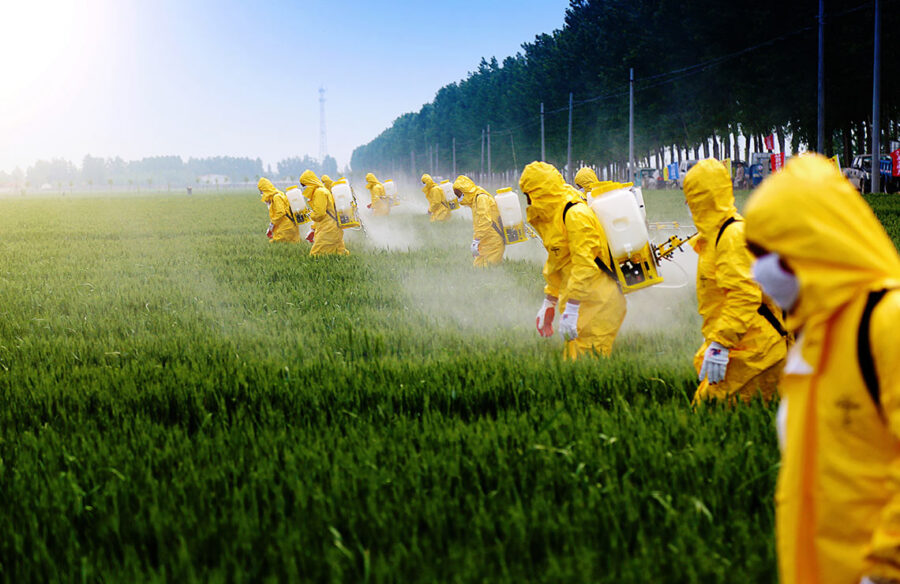
The really big breakthrough came with Crispr, the technology that makes it possible to enter DNA sequences and make changes in absolutely every living organism, whether bacteria, virus, insects, fish, human beings or other mammals. Actually, this technique has been developed by nature itself. The researchers have merely copied it. Already, seed has been developed that is resistant to fungus infection, potatoes containing less acrylic (a substance that can induce cancer), mushrooms that don’t go brown, corn that can survive a drought and pigs that are resistant to common virus infections, to mention a few.
Agrisea, an unbelievably exciting British start-up, is a splendid example of how gene technology can be used to get food to a growing population. They have developed a rice plant (and heaps of other plants, of course) that can grow in salt water and make use of the nutrients in the sea. Thus the food can be growing in a floating compound in the sea without soil, without fertilizers and without having to add fresh water which, as we know, is a scarce commodity in many places. The first test installation will be run towards the end of 2020.
Crispr opens up endless possibilities for better food production and makes it more sustainable. With plants that are more robust, one can produce more food on a smaller area, with less loss and waste. Better animal health makes for better animal welfare and less wasted feed and energy. The question is how one can secure all these improvements without losing control.
The next step for gene modification is to have regulations that make it possible put it to use. There are no international regulations. So far, EU has said that Crispr should be treated with the same level of severity as GMO with imported DNA, that is with serious restrictions. In other places in the world, like the USA, a difference is made between GMO and gene modification. Plants that could have been cultivated with traditional methods, but are improved with Crispr or some other genetic tool, are not hampered by any special restrictions. American authorities treat them as they treat all food from conventional farming.
With good regulations, gene technology has the potential to make a strong contribution to a more efficient and sustainable food production.
2. Precision agriculture
People like to think of agriculture as something a bit old-fashioned, close to nature and a constant. In reality, farming has been well on its toes when it comes to technology development dating back to the industrial revolution. Today it is common to have both milking robots and self-driving agricultural machinery. But big changes are on their way. The biggest problem with the farming technology of today is that it is too coarse. A huge field is usually treated as if there were no variation in the entire field. Even if some part can have more than enough humidity and another part too little, the field is watered equally much everywhere. Pesticides are being sprayed all over the place, sometimes even from an airplane. Fertilizers are evenly spread too. Giant, heavy trucks are driving on the fields, compressing the soil so hard that it is difficult to grow anything there.

Next generation farming is much more precise and less harmful. Unmanned planes and drones can scan the cultivating areas, collecting and analyzing data to find out which places need watering, fertilizing or spraying. Down on the ground, all-electric light robots roll along between the plant rows studying plants on leaf level, sowing or spraying only on the exact spots where that is needed – and then rolling back to charge itself.
This technology makes it possible to have large plantations with a better quality on the same acreage, and at the same time reduce the use of pesticides and fertilizers by almost 95 percent.
This will improve the soil quality, which in turn will mean large benefits. When the soil offers good conditions for microbes and living organisms, sufficient content of organic material and a good soil structure, it will be able to prevent erosion, produce better crops, create better conditions to store water and to drain off excessive water and, not least, ensure better conditions to store carbon.
3. Internet of things
When everything is connected to the net, that is because there have been strong, simultaneous developments in many technological fields. Mobile tech, location tech, sensors and data storage are only a few of these key technologies. If you combine them you can make rather funky things.
Connected sensors can obviously be used in the field. But it can also be used to establish a more sustainable meat production.
A long, long list of companies are now developing solutions that will ensure better animal health, animal welfare and yield in meat production. What many of these projects have in common is that they put a sensor on the animal, gauging the animal’s body temperature, movements and level of activity. The data is collected and treated in real time. When, for example, a cow has a slightly increased body temperature, is moving less and lowers her head, that could mean that she is about to fall ill. Such early warning signs can be next to impossible to detect in a herd, and the earlier the animal receives treatment, the easier it is to limit the passing of the infection in the stock and apply a treatment that stops a serious illness. Some systems even have a lamp on the sensor in the cow’s ear. It lights up when illness is suspected, to make it easier for the farmer to find the right cow among all the others.
To sum up, one might say that the constantly growing human population is facing an enormous challenge. Biodiversity must increase. The protection of natural habitats must step up. The soil health must improve. Plants and animals must become more robust. The production must be more reliable in a less reliable world.
I don’t think it will happen through innovation. The solutions are here already. It is rather the scaling that will cause a problem. To make authorities invest, regulate and put things in order for sustainable, efficient food production and protection of nature. If they do this, they are contributing to saving the world, no less.
You reap what you sow.

Joacim Lund
Technology commentator, Aftenposten
Years in Schibsted
15
What I’ve missed the most during the Corona crisis
Italy! Ever since I was a choirboy one summer in the Vatican in the 80s, I’ve visited as often as I can.
